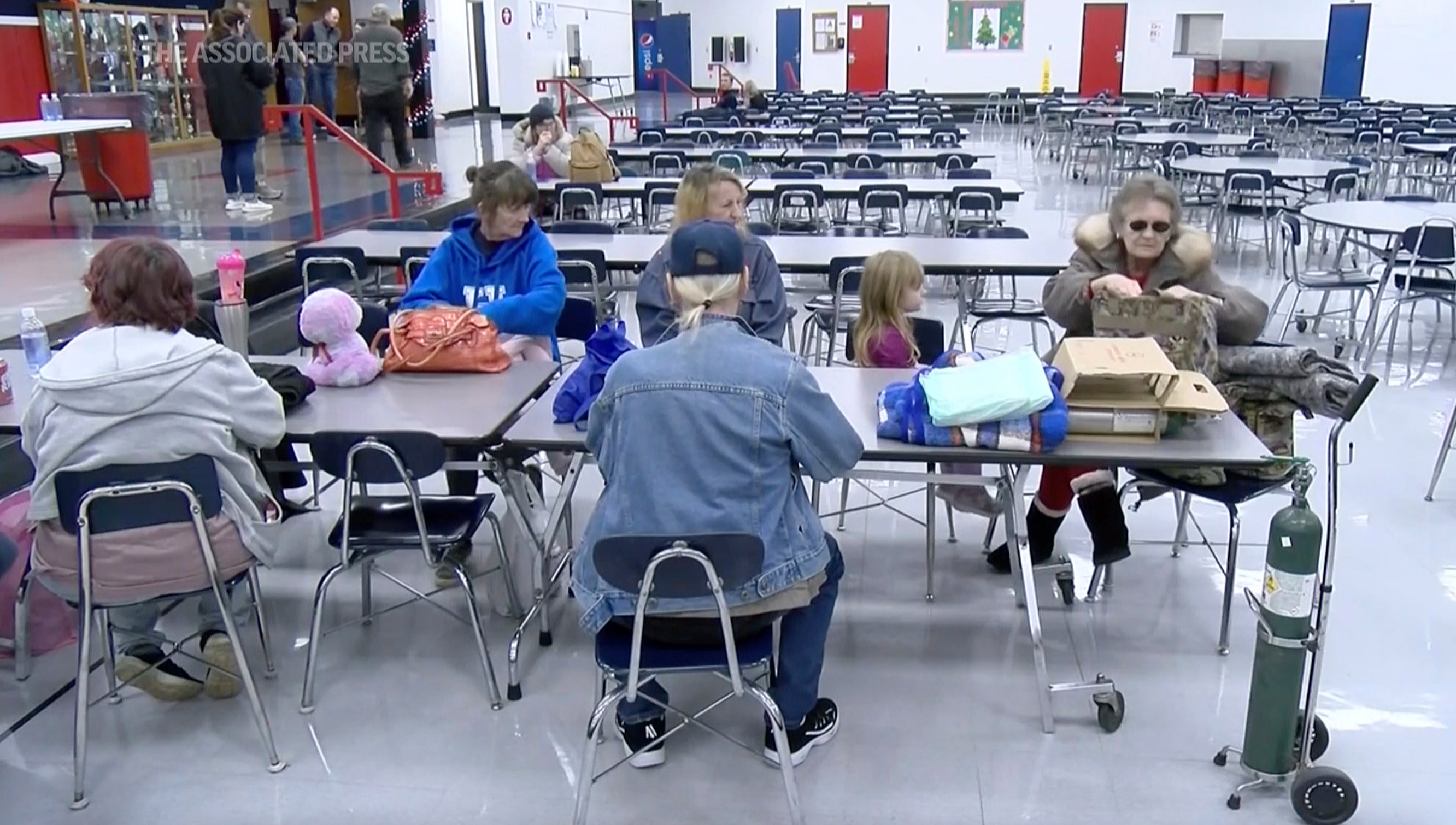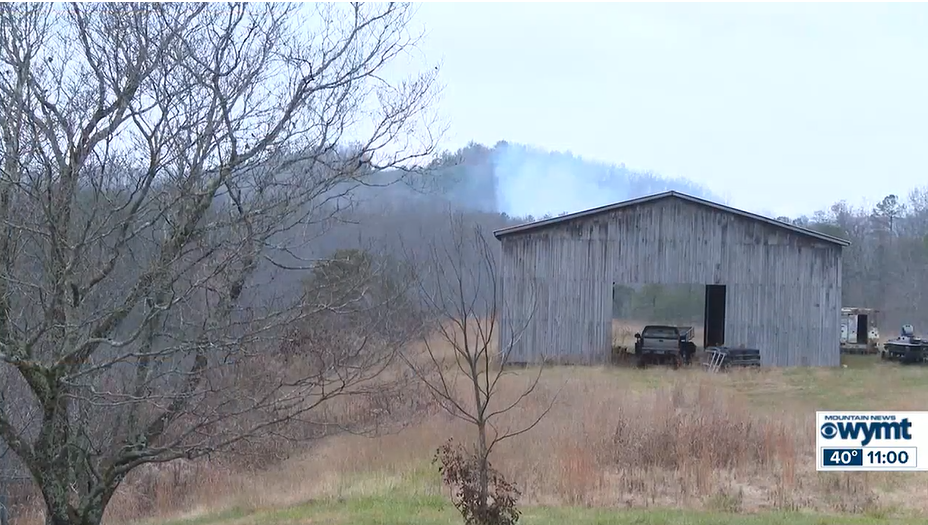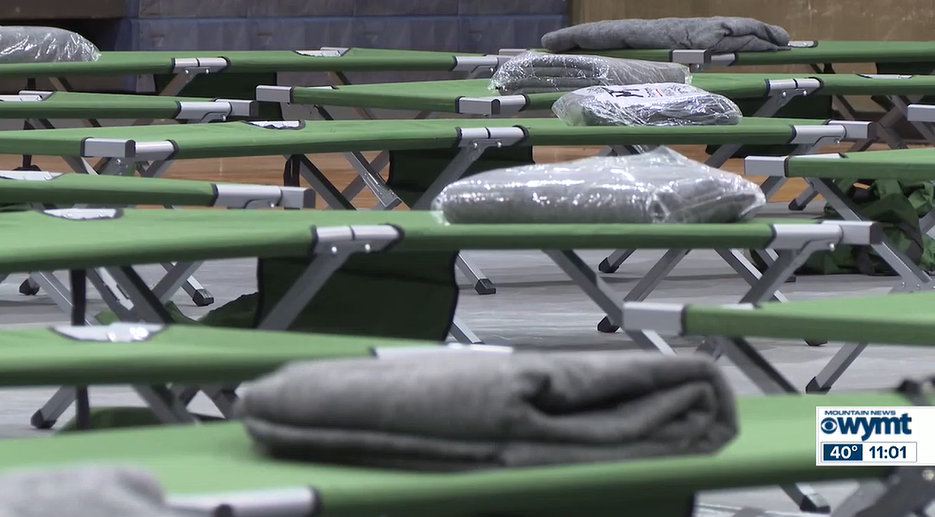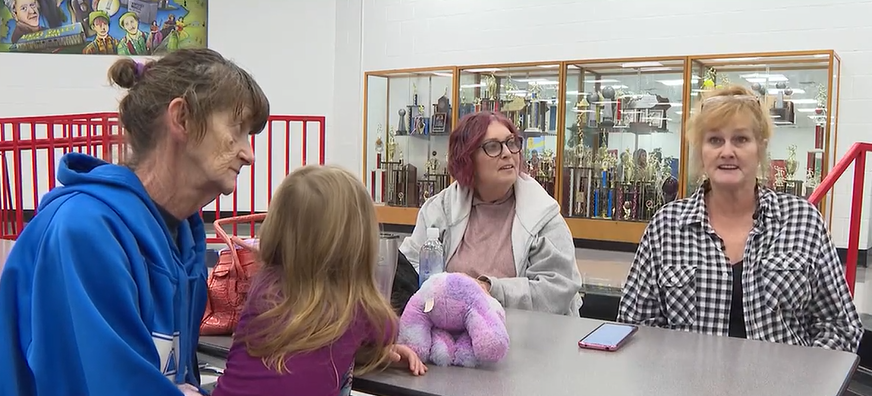A derailed train in Kentucky spilt toxic chemicals. As residents return home, many questions remain
After spending Thanksgiving camped out in a school hall, evacuated Livingston residents are now going home. But the cause of the train derailment remains a mystery. Amelia Neath reports

Your support helps us to tell the story
From reproductive rights to climate change to Big Tech, The Independent is on the ground when the story is developing. Whether it's investigating the financials of Elon Musk's pro-Trump PAC or producing our latest documentary, 'The A Word', which shines a light on the American women fighting for reproductive rights, we know how important it is to parse out the facts from the messaging.
At such a critical moment in US history, we need reporters on the ground. Your donation allows us to keep sending journalists to speak to both sides of the story.
The Independent is trusted by Americans across the entire political spectrum. And unlike many other quality news outlets, we choose not to lock Americans out of our reporting and analysis with paywalls. We believe quality journalism should be available to everyone, paid for by those who can afford it.
Your support makes all the difference.In the small, remote town of Livingston, Kentucky, residents had been preparing their turkeys and setting their tables for Thanksgiving the following day.
The roughly 200 people had no idea that a train carrying chemicals had derailed off the tracks nearby.
In total, 16 large train cars derailed – two containing molten sulphur. The chemicals instantly caught fire and sent large clouds of smoke billowing into the air.
The atmosphere quickly filled with toxic sulphur dioxide, prompting authorities to declare an emergency and evacuate residents from their homes, sending them to shelter in hotels, lodgings, and even a local middle school.
It wasn’t quite the Thanksgiving Livingston residents had hoped for – eating pizza slices on a camp bed in a school hall the evening before they planned to fill up on turkey and cranberry sauce. On the holiday day, the train company CSX put on a Thanksgiving dinner in the school and a local church.
On Thursday afternoon, residents were given the all-clear to return home to spend the remainder of the holiday weekend as planned.
But, despite assurances that the area is now safe, many questions remain – including what caused the derailment in the first place.
Here’s what we know so far:
What happened?
On Wednesday, at least 16 train cars derailed near the small town of Livingston in Rockcastle County in Kentucky.
The Eastern US railroad operator CSX said that the trains derailed just north of the town around 2.23pm, where “at least 16 cars were involved, including two molten sulphur cars that have been breached and have lost some of their contents, which is on fire”.
Two cars carrying sulphur caught fire, releasing toxic fumes into the air as a result.

Large clouds of smoke were spotted by witnesses, which left first responders struggling to get to the scene at first, WYMT reported.
At least one rail crew member out of the two-person crew sustained minor injuries and was treated at the scene.
Authorities came to the site to assess the seriousness of the chemical leak while US Route 25 was shuttered in both directions and Livingston’s 200 residents were placed under an evacuation order.
Another town nearby, called Piney Branch, was also evacuated, according to WYMT.
CSX urged residents to use emergency lodging in Mount Vernon and that it was working with local restaurants and hotels nearby to provide meals.
The Red Cross also provided emergency shelter at the local Rockcastle County Middle School, which provided families with pizza, snacks and drinks.
Kentucky Governor Andy Beshear declared a state of emergency in the area so that the state’s Emergency Operations Center could be activated.
“By issuing a state of emergency, we are ensuring that every state resource is available to help keep our families safe,” Mr Beshear said in a statement.
“Please stay clear of this area as state, local and CSX officials respond.”
In an update on Thursday morning, CSX said the two molten sulphur carts continued to burn, despite ongoing efforts to distinguish the blaze. It remains unclear what caused the train to derail.

What was the train carrying?
CSX said that, besides the two train cars carrying sulphur, some other cars were carrying magnesium hydroxide.
Those cars do not appear to have been breached in the accident.
Other non-hazardous items such as grain and plastic were also being transported on the train.
The rail company explained that, when molten sulphur burns, it releases sulphur dioxide.
Sulphur dioxide is known to affect the human respiratory system, which can make breathing very difficult and can damage lungs, according to the Environmental Protection Agency. People with asthma, particularly children, can be very sensitive to exposure.
Sulphur dioxide has a strong odour and, while it is colourless, sulfate particles have the ability to create haze and reduce visibility.
As well as the dangers to humans, sulphur dioxide can seriously damage the environment – harming trees and plants and limiting their growth.
Bryan Tucker, a spokesperson for CSX, said the company could not yet confirm the amount of sulphur dioxide released into the air until measurements were collected using air monitoring equipment.
Thanksgiving plans ruined
It was not the most ideal start to the holiday for the small Kentucky town.
Linda Todd, an evacuated Livingston resident, said that her Thanksgiving rituals came to an abrupt end when she was told to evacuate her home.
“I was freaking out because I said, ‘We are cooking, we got turkeys in the ovens. We can’t leave.’ They were like, ‘You have to go, it is a bad situation. You have to go,” Ms Todd told WYMT.

Another resident, Cindy Bradly, also told the outlet she was ushered out of her home by authorities.
“We get a knock at the door, a pound at the door, Sandy Singleton, the commissioner of Livingston, there’s 12 to 14 cars in the river, you have to get out of here,” she said.
"We said, ‘What about Thanksgiving?’"
CSX provided a Thanksgiving dinner for the evacuated townsfolk at a local church and middle school.
Mr Beshear shared a tweet, asking people to keep the Livingston residents in their thoughts.
“Due to the train derailment, many families in Livingston in Rockcastle Co. will be displaced for Thanksgiving,” he wrote on X.
“Please think about them and pray for a resolution that gets them back in their homes. Thank you to all the first responders spending this day protecting our people.”
Evacuation order lifted
By Thursday afternoon, the rail company and emergency responders had managed to extinguish the flames.
CSX made the announcement on Thursday afternoon saying that special air monitoring equipment had been used to determine that the area was safe for residents to return home.
Mr Beshear confirmed on X that the residents could spend the remainder of the holiday at home.
“Thank you to the first responders who worked hard to put out the fire at the train derailment site in Rockcastle County,” he wrote.
“While there is still work to be done, we are thankful for the good news that our families in Livingston are able to spend the rest of Thanksgiving at home.”
An outreach centre has been opened in a local gymnasium to help families back into their homes.
From Sunday, CSX will also be reimbursing residents for any wage losses and out-of-pocket expenses caused by the incident – and will still be supplying food and lodging as needed.
The US Route 25, which was was closed in both directions, has also reopened.
What caused the crash?
As residents are making their way back home, the rail company is now focusing on clearing up the molten sulphur from the ground and shifting the derailed cars to restore the area completely.
But, the cause of the crash remains a mystery.
CSX spokesperson Bryan Tucker told The Independent on Friday that the cause of the derailment is still under investigation.
Join our commenting forum
Join thought-provoking conversations, follow other Independent readers and see their replies
Comments